Our Blog
A Mudgee Winter Wonderland
A vigneron's view
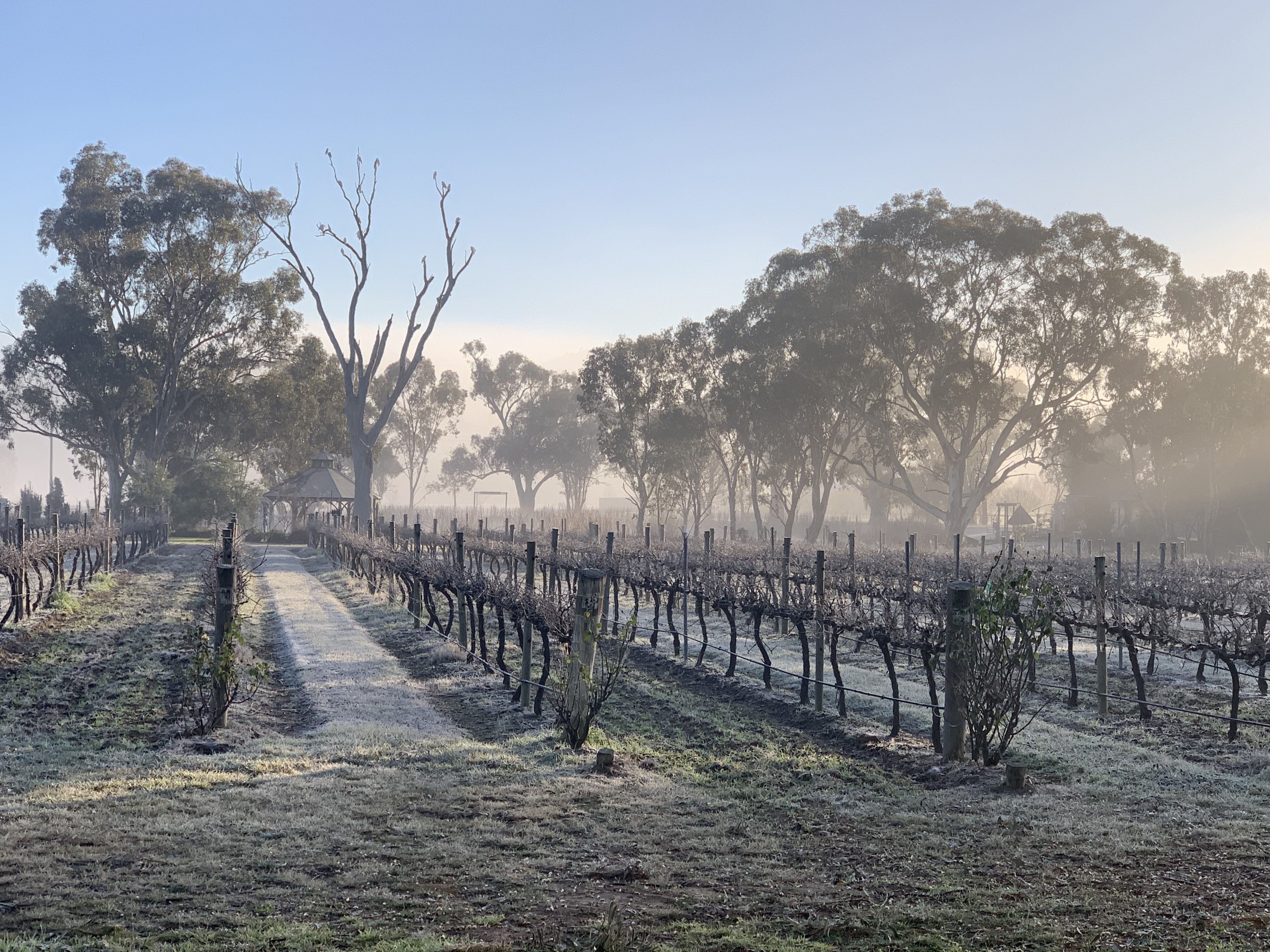
Winter came early this year. Our first frosts were in the first week of May, and as I write this newsletter – we’re up to around twenty frosts...
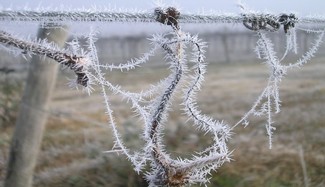
Despite this number (my benchmark to start pruning), the combination of the soaking vineyards from vintage 2022 and the fact that most frosts have been light, the juice has only now stopped flowing.
Our vines are mostly around twenty years old and show their age in damaged or missing cordons (the horizontal ‘arms’ that extend out from the trunk). So before manual pruning begins, we are repairing broken cordons achieved by laying a convenient cane from last year along the wire.
In a very short time – by next March - the extension will be fruit-bearing. Painstaking work, but necessary if one wants future crops to make up for the inevitable reduction in productivity caused by aging vines. By the end of the day in the vineyard, the body is tired and the fingers numb.
This is quite a neat segue into this blog’s wine feature...
Vin Brulé
...Which is vin brulé – Italian sweet and spiced hot mulled wine made with red wine and orange juice that puts the body back into order. There are various types of mulled wine served around the world – vin chaud in France, gluhwein in Germany – so here’s the mulled wine from Italy. Their recipes are remarkably similar!
If you like it a bit sweet, pick one that says ‘Semisecco’, ‘Amabile’ or ‘Dolce’ on the label. If you like it dry, look for the words ‘Secco’ on the label (with this style the flavours are more rhubarb or strawberry). Lambrusco di Sorbara and Lambrusco Rosato (rosé) are the two lightest styles, showing strawberry, and very little or no tannin).
The Recipe
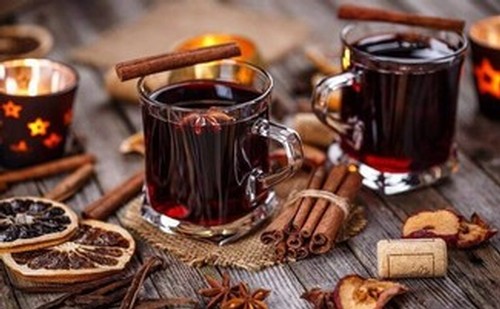
Prep Time: 15 minutes
Serves: 6
Calories: Not available!
Ingredients
750 ml red wine (Barbera, Cannonau or Lagrein*)
120 g sugar
1 orange
2 cinnamon sticks
2 star anise pods
10 whole cloves
*My choice would be a fruit-forward (as opposed to savoury) wine that is not aggressively tannic. But it’s your palate, and no wine would necessarily be out of bounds.
Instructions
Thinly peel the orange using a vegetable peeler to get as little as possible of the white bitter part. After that, cut the orange in half and squeeze it. Transfer the orange juice and peel to a saucepan.
Add the sugar, cinnamon sticks, cloves and one glass of wine (about 150 ml) and bring to a boil, constantly stirring to dissolve the sugar.
When the mixture reaches boiling temperature, add the star anise pods and the rest of the wine and keep it on the stove until it steams but does not boil. Remove from the heat just before it reaches boiling temperature. Serve hot.
Notes
Serve hot, as soon as possible after preparing. If you cannot serve it immediately, keep it on the lowest possible heat to prevent it from reaching boiling temperature (you don't want to evaporate the alcohol!).
Vin brulé and food
In Italy, panettone is clearly the most popular food companion for brulé, especially around Christmas. But there are plenty of other popular matches amongst Italian foods. These would include gorgonzola gnocchi, cheese fondue, mixed nuts and gingerbread biscuits.
Cannonau
The fact that vintage 2022 was pretty dismal in Mudgee is no longer news. It has led to there being no 2022 Barbera from di Lusso. I’ll miss the fruity mouth feel and spicey palate that is so different from the savoury taste profile of Sangiovese.
So, with the help of friends down south around Mildura, I’ve ‘discovered’ Cannonau - a premium red wine in the style of Grenache - whose home is on the island of Sardinia. The Italian DOC system permits the production of several different styles of Cannonau. Because of the body of our first Cannonau release (due in July), and its twelve-month aging, ours would most closely resemble the top-quality ‘Riserva’ style.
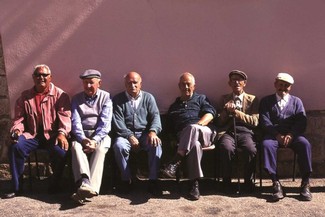
It’s estimated that one in five wines consumed in Sardinia is a Cannonau (and, I’d guess, another one in five could well be Vermentino!). Cannonau wines have attracted considerable attention in the last few years for their association with longevity. Sardinian locals tend to live well into their 90s and, in many cases, to over 100, and diet on the island is usually given as a key factor in this. Cannonau wine tends to be high in anthocyanins and polyphenols, antioxidant-rich compounds which have been linked to heart health.
Well, there you are!
Meet our Latest Wine!
Succo di Aleatico
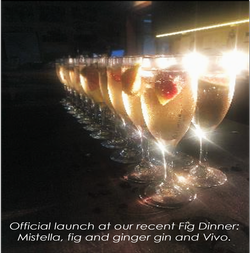
We are excited to introduce the newest addition to our di Lusso Estate range - Succo di Aleatico - a complex and intriguing mistella.
Succo di Aleatico is made from the juice of our Estate-grown Aleatico and barrel-fermented grappa.
Aleatico’s luscious candy flavours when blended with the grappa produce a 'wine' with a beautiful golden colour, late harvest flavours of apricot, marmalade and peach, and a spicy finish.
Not as sweet as a dessert wine, Succo di Aleatico can be enjoyed with baked desserts or after dinner with hard cheeses... or at any time, as a mixer - on ice, with di Lusso Estate Vivo! and lime.
Available now for $40 + shipping
Origins
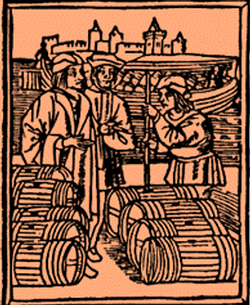
Mistella in some form, has been produced for over 300 years throughout the wine-producing regions of Europe, so there is some debate over its origins.
One theory is that Mistella was first developed by the Dutch to increase the shelf life of wine for transportation by ship (the addition of grappa would have killed any fungus or bacteria in the barrels).
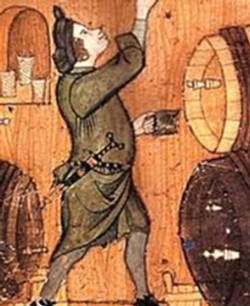
Another story goes that at some point in history, a careless worker at an unknown distillery or winery tipped some brandy into a barrel, not realising it was two-thirds full of juice, thus serendipitously creating the local aperitif. Versions of this happy accident are told in pretty much every mistella-producing region.
I am perhaps more persuaded that our heroic workers simply combined two delicious liquids in the age-old spirit of enquiry.
Suffice it to say that this style of drink has a long history in Italy, Spain, and some of France’s grape-growing regions (notably Cognac and Armagnac).
Winemaking
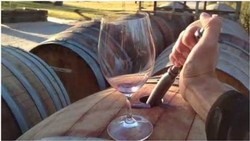 The Italian term Mistella, sometimes called Sifone, means the same thing as the French Mistelle and the Spanish Mistela: a mixture of grape juice and alcohol. Its claim to fame, as it were, is that the base juice does not undergo fermentation.
The Italian term Mistella, sometimes called Sifone, means the same thing as the French Mistelle and the Spanish Mistela: a mixture of grape juice and alcohol. Its claim to fame, as it were, is that the base juice does not undergo fermentation.
The Aleatico mistella was stored for three months in stainless steel tanks, and then wine spirit (grappa) was added. After that, we moved it into used French oak barrels. It rested for over two years.
From the very first time we tasted the blended wine, it was clear the flavours were interesting and unique! The final result is a tribute to creative winemaking and a special variety.
For our mistella, we chose the versatile Aleatico grape (which is also used in its raisined form in our Tuscan-style Vin Santo offering, Appassimento, in some of our Vino Rosato vintages, and of course, in our Aleatico wine itself).
Salute!
A Challenging Harvest
Harvest time
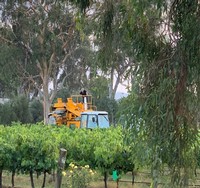
Before an enterprising American wine reviewer and writer named Robert Parker came on the scene in the 1970s, one couldn’t rely on ‘vintage reports’ for accurate assessments of the quality of a region's harvest.
Before his arrival on the scene, harvest reports were basically put out by the trade to sell wine. As I think about it, some still are!
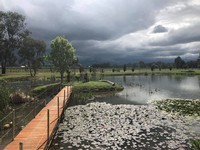
Rain and temperature are the two factors that will either make or break your vintage.
Neither were in our favour this year, with low spring temperatures and inconsistent but mostly very high rainfall experienced from September onwards - including, most recently, March.
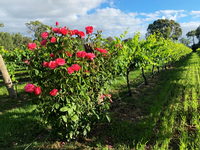
In summary, Sangiovese, Vermentino and Barbera suffered most, whereas our Nebbiolo, Lagrein, Arneis and Aleatico produced crops that though somewhat light, will produce good wines.
(I’m assuming a good outcome for Lagrein and Nebbiolo. As I write this report, it's bucketing down for the fourth day in a row. One more day’s rain, and I reckon we’ll have no reds at all in 2022!)
Elsewhere on the farm...
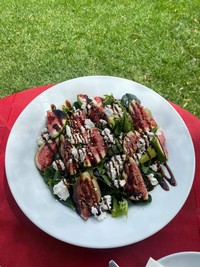
Our figs, on the other hand, after a late start have since early March been delivering beautiful fruit – which is now forming the basis of some lovely Autumn menu dishes (like our delicious Fig Salad!)
Fresh figs are also available for purchase from the Cellar Door.
And olives? What olives. After the bumper 2021 season, they’re having a rest, as they tend to do.
Our new release Vino Rosato
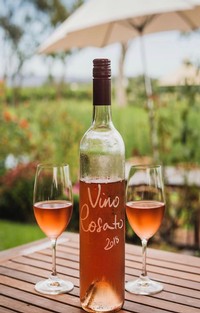
As I feared, our Sangiovese-based rosé from the 2021 vintage didn’t manage to last till the 2022 release – it was a very popular wine indeed. To make matters even more challenging, we have no 2022 Sangiovese fruit with which to craft its successor. (We make our rosé by using the French saigné method of ‘’bleeding” free-run juice from the base wine – in our case, Sangiovese - to arrive at a savoury, food-friendly wine rather than a fruity one.)
So instead, we decided to use a different method altogether by simply blending a 2021 Sangiovese with a 2021 Fiano post-fermentation (a practice which is actually prohibited in Europe — except for the making of rosé Champagne).
After adjusting slightly for sugar, we bench-trialled the result until we got close to the flavours and textures of the 2021 Vino Rosato of di Lusso Estate. This blended method will remain a fall-back option only.
Light at the end of the rainbow
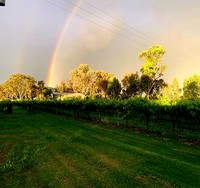
Despite the many challenges sent us by the weather and supply chain disruptions, we look forward to some great upcoming events at the Estate.
In addition to our Fig Dinner, we have our Concert and Canapes on Easter Sunday and plans for movie nights over the next few months. We will keep you posted!
Balance, flavour and mouthfeel
The three keys to wine.
Balance, flavour and mouthfeel are much used wine terms. Understanding what they are, and how they relate to one another, is a somewhat complicated but valuable exercise for anyone who enjoys wine. Let’s go!
Balance
 Simply put, a wine’s balance and mouthfeel describes how a finished wine demonstrates several key components of a wine - namely alcohol, tannin, acidity, sugar, the grape and the method used to make the wine (ie the winemaking). A well-balanced wine, each of these components will be ‘at peace‘with the others. Balanced wines are symmetrical and tend to age well.
Simply put, a wine’s balance and mouthfeel describes how a finished wine demonstrates several key components of a wine - namely alcohol, tannin, acidity, sugar, the grape and the method used to make the wine (ie the winemaking). A well-balanced wine, each of these components will be ‘at peace‘with the others. Balanced wines are symmetrical and tend to age well.
But there are two additional sensory components that turn a well-made wine into a must drink wine.
Flavour
 The first component is flavour. Each variety we work with has a flavour-signature. You can taste it by munching grapes in the vineyard. The salty Vermentino, the rosemary herby Sangiovese, the ‘spicy-cherry Barbera, etc. It is the job of the viticulturalist to deliver these ‘typical’ flavours to the winery.
The first component is flavour. Each variety we work with has a flavour-signature. You can taste it by munching grapes in the vineyard. The salty Vermentino, the rosemary herby Sangiovese, the ‘spicy-cherry Barbera, etc. It is the job of the viticulturalist to deliver these ‘typical’ flavours to the winery.
Then it’s up to the winemaker to elevate the fruit, at least into a ‘well-made wine’ but hopefully into “must-” drink’ territory.
Mouthfeel
The mouthfeel of a wine - the sensory perceptions experienced in the mouth when a wine is tasted- is key to achieving the migration. There are six components to the mouthfeel of wine:
Alcohol, Sugar and Water

Alcohol is a measure of how much fructose and glucose is converted in the fermentation process; residual sugar is a measure of how much natural wine sugar remains in the wine after fermentation and water is, well, water!
Length
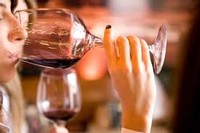
Think about the after-taste of the wine. In mouthfeel language this is called length. Does it disappear quickly or do flavours linger? Which flavours stick around? Length doesn’t depend on the grape variety, the youth of the wine or the use of oak. They come from the slow release of flavour compounds in the wine. Generally, the ‘longer’ the wine, the more attractive.
This leaves us with two components - tannin and acid. These are tricky to define, but it’s the characteristics of each – and the relationship between them – that optimises the balance and overall attractiveness of a wine.
Tannin
Tannin is a naturally occurring group of compounds (called polyphenols), residing in the skins and seeds of (mostly) red wine grapes. Once the grapes have reached the winery, the way the tannins are extracted has a huge impact on the quality and character of the final wine.
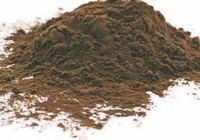
Effective tannin management releases a whole bunch of positive attributes in wine - colour stability, palate structure, producing astringency as a positive mouthfeel in a wine (as opposed to bitterness as a taste), and protect the wine against oxidation.
These are a group of compounds that are vitally important in wine, and more specifically red wines. From this stage on, the key to locking in wine quality is the rate of oxygen flows over the course of treatment.
As different chemical reactions involving oxygen take place, the phenols react to form polymeric species that enhance palate structure and colour stability in the wine., and also work to diminish excessively green, herbaceous characters and reductive aromas in the wine.
Acidity
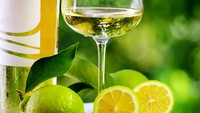
Acidity is a necessary structural component that balances sweetness, alcohol and the bitterness of tannins. Too much acidity can make a wine seem tart and light, while too little acidity can make a wine taste cloying and clumsy. Well-balanced acidity is the key to making a smooth, drinkable wine.
There are several different types of acid in wines. Malik (think apples) and citric (lemons) acid provide the mouth watering freshness that we very much favour at di Lusso.
Tartaric acid helps a wine age well. And finally, lactic acid (which is formed in the winery via a process called malolalactic acid fermentation) is that softer one that contributes roundness and richness to the mouthfeel. The most common is tartaric acid which as the name suggests is tart, but it is also a powerful antioxidant which helps a wine age, providing texture, ‘chewiness’ and depth.
Robert
Il Palio and the Super Tuscan Story
The di Lusso Estate il Palio wine is the only red blend in our portfolio. We’ve been producing it since 2002 – our first vintage. To some it’s seemed a bit ‘exotic’ – the use of Cabernet Sauvignon, a French varietal from Bordeaux as the base wine, then blending it with Italian reds, and its relatively rich fruitiness (as opposed the predominantly savouriness of most Italian reds) all made for an unusual point of difference.
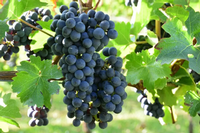
DNA evidence determined that Cabernet Sauvignon was the offspring of a chance mix of Cabernet franc and Sauvignon blanc, most likely as chance crossing that occurred in the 17th century.
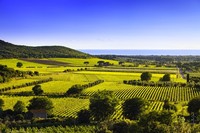
Within a hundred years the variety was widely grown in Italy - winemakers being convinced by its food friendliness, the less ‘sugary’ flavours it rendered to a bigger, richer blend. But also because to winemakers it offered up a ‘doughnut’ effect in the mid palate that encouraged other complementary varieties into the blend to “fill out the mid-palate”.
The style remained rare until the 1970’s, which saw a revolution in Italian winemaking. Following two decades post-war that saw in effect the disintegration of the Italian wine reputation, the government introduced an appellation system similar to that introduced into France in 1935.
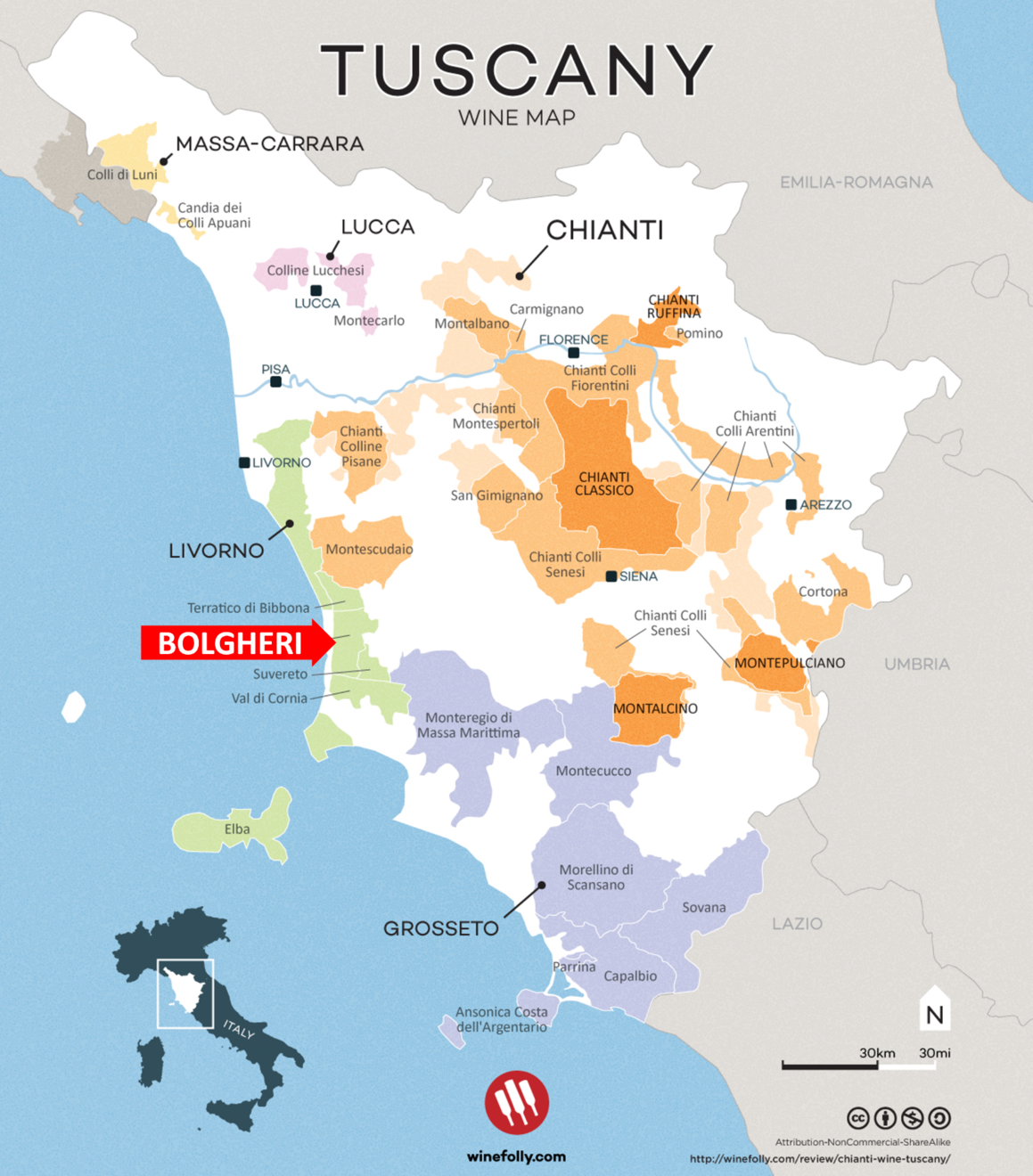
Each region and each varietal was carefully defined in every way – density of vines, use of water, use of oak, time before release, etc - to a degree of precision that didn’t appeal at all to a number of Tuscan winemaking ‘heavyweights’.

But the wine writers of the world became aware of the region. I maintain that the most influential of them all – Robert Parker – visited Bolgheri in the mid 1980’s and proclaimed in his Wine Advocate magazine, “These are not only Tuscan wines, they’re Super Tuscan”.
And so a new wine class was born. In 1992 the Italian government established an Appellation specifically for these wines – IGT or “Typical Geographic Indication".
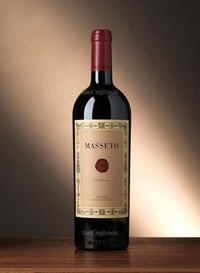
A rather silly title, but a hard-earned one. Today, they are some of the world’s most expensive wines. For example, the top of the range 2011 Masseto would cost $3700 a bottle; not far off the top Bordeaux or Burgundies of France.
Famous Bolgheri/Marremma producers include Antinori, Frescobaldi, and Angelo Gaya from Piedmont.
di Lusso Estate il Palio
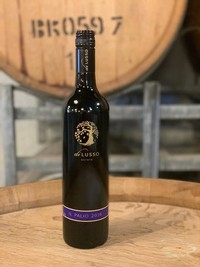
At di Lussso Estate, our 2016 Il Palio (named after the Italian tournaments commemorating historical events of the Middle Ages) is 80% Cabernet Sauvignon, 10% Sangiovese and 10% Barbera, with a cellar door price of $33.
Question: is the Masseto a hundred times better? Unfortunately, wine doesn’t work like that!
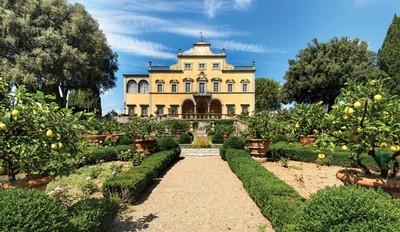
As an aside, in the 16th century the villa belonged to the Del Giocondo family. In 1505, Leonard da Vinci was commissioned to paint the wife of Francesco Del Giocondo.
The painting, formerly known as La Giaconda, is actually the famous portrait of The Mona Lisa, now preserved at the Museum of the Louvre in Paris.
The home of famous Bolgheri/Marremma producer Antinori, the Villa Antinori Di Monte Aguglioni.
Robert
Arneis. The Re-birth of a Classic
Origins
This variety, native to the hillsides of the Roero near Alba in Piedmont, was a classic white table wine variety at least as long ago as 1350 AD. Over the centuries since, with its characteristic of zero tannin and pleasant perfumed aromatics, it became used more as a blending agent to reduce the notoriously fierce tannins of Nebbiolo…in particular the tannic brooding styles from the villages of Barolo and Barbaresco.
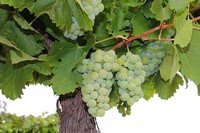
In the last eighty years or so, however, its usefulness as a blending agent to modify the ‘aggression’ of Nebbiolo further declined. Producers started using other methods of bringing the drinkability of Nebbiolo forward by a decade or more – from up to twenty years down to around five or so. Only a couple of producers (including notably Vietti, another favourite of ours) didn’t lose faith in it as a varietal white table wine.
Grapes contain thousands of tannic compounds, known as phenolics. Most of the tannins are in the skins and seeds, and they are extracted during the winemaking process. They are an excellent natural preservative, and give the wine structure. But some are harsh and bitter; and some taste "green" or unripe. Techniques such as micro-oxygenation (for tannins) and malolactic fermentation (for harsh acidity) became standard in the industry in the second half of the twentieth century, and wholesale replacement of Arneis with Barbera and Nebbiolo occurred.
Folklore has it that Arneis retreated to two vineyards, when someone asked the question, “What do think this tastes like as a table wine?” And of course, as they say, the rest is history.
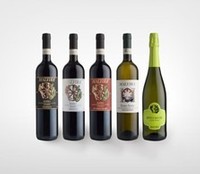
Our favourite Arneis producer, Malvira, has certainly taken advantage of this renewed popularity. Their winery, just a stone’s throw from the village of Barbaresco, produces FIVE different wine styles from the Arneis grape – a ‘regular’ dry white and a premium of the same vintage, a sparkling Arneis, an Arneis rosé and a vin santo style!
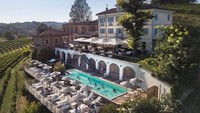
The fifty-meter strip of lawn from Malvira’s winery to the vineyard, when we visited there in 2009, was lawn. Today, their website features a luxury boutique hotel – complete with a magnificent swimming pool.
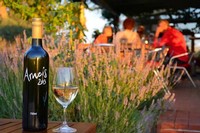
At di Lusso Estate, we planted just over an acre of Arneis on our Brambletyne site. Despite the variety’s reputation as being ‘tricky in the vineyard’, our experience is positive. And equally so in the winery, with a succession of good wines that provide the basis for our Vivo! bubbly.
Rob
Vermentino....a much travelled variety
A lot of Italian varieties share the same fate when it comes to missing their historical origins. Vermentino is like that. Although most suggest that the grape came from Gallura and spread in a circular motion in the middle ages, to me its highly unlikely this beautiful, uncomplicated wine would have begun its life in a little region in Sardinia,(its current ‘home base’).
Not romantic enough! There are other theories. The one that appeals to me most goes along the lines that Vermentino started its journey as a commercial wine in mainland Greece, as long ago as 2000 BC. (With this Greek heritage, it’s quite possible that its journey began even further back in time, to the Caucasus near Georgia and Armenia back in 4500 BC!).
This was when the first references were made to wine as a ‘social lubricant’. Nice term! Continuing the Greek theme, we note that in ancient times they founded over four hundred colonies in the Hellenistic period alone; including in Puglia, Sardinia, Basilicata and Sicily. The Greeks were well known for taking their favourite tipple with them, and so it was that Vermentino vines came to be planted in Italy.
The wine itself became particularly popular in the southern regions, which was where the Roman army tended to source their invasion kits – grains, vegetable seeds, grazing animals, etc – and vines for planting in their new environment). During the growth phase of the Roman Empire (around 100 to 20 BC), when France and Spain were settled, I’m guessing that’s when Vermentino went ‘offshore’. (In southern France in Provence and in the Languedoc-Roussillon where it’s still there, in the varietal name Rolle).
During the Dark Ages, Vermentino (and many other varieties) disappeared; but turn the clock forward thirteen hundred years or so, and the Spanish Hapsburgs reconquered Sicily (around 1500) - bringing back with them good old Vermentino. Spanish influence hung around Sicily, Sardinia and the southern mainland of Italy for over two hundred and fifty years in gentle sort of way, and Vermentino again thrived – mostly in Sardinia, Tuscany and Liguria.
As Europe headed towards the Napoleonic Age, Austria and France (of course Napoleon was more Italian than French in ancestry, spirit and even influence) replaced Spain in terms of influence down south and in the islands – and it seems they left without taking their Vermentino with them! In the last two hundred years or so, the variety has quietly emigrated from its two Italian regions – Sardinia/Tuscany with its more concentrated, sometimes oaked style, and Liguria, where it’s texture and body is very similar to Pinot Grigio –only the nose is different – chiefly to Australia United States.
Despite at times reading otherwise, I can say that di Lusso Estate produced the first commercial Vermentino; vintage 2003, from fruit grown by Bruce Chalmers in Euston (near Mildura).
Sangiovese......A grape with an 'interesting' history
Sangiovese is almost certainly the most popular Italian red variety in Australia - and in our di Lusso Estate portfolio. But it's not without a skeleton or two in the closet, and an interesting history. Read on!
Sangiovese is almost certainly the most popular Italian red variety in Australia - and in our di Lusso Estate portfolio. But it's not without a skeleton or two in the closet, and an interesting history. Read on!Navigating your way around the Sangiovese-Brunello-Montepulciano-Supertuscan Thing!
Working in the cellar door on any given Saturday, I’ll meet visitors who’ve been to Tuscany, or who worship Brunello, or who don’t know where Chianti fits into the landscape, or who think they know what a SuperTuscan is, or who think that Sangiovese is the grape from which the wine style Montepulciano Abbruzzo is made…and so on. Here how Italy’s most-grown grape hangs together – in the vineyard and in the bottle Sangiovese …the most important thing to remember about the grape variety Sangiovese has really only recently been definitively identified. (Previously, ‘Sangiovese’ was so commonly blended in both the vineyard and winery with other varieties – mostly with poor results- that its charm was not evident).
What has got the variety into ‘trouble’ at several levels is the fact that biologically the variety’s viticultural characteristics can vary enormously due to its sensitivity to location as to appear to be different varieties rather than just variants due to location (very similar to Pinot Noir in this respect). Over the past thirty years or so, many of the best producers have deliberately grown a range of different selections in their vineyards and this attention to detail has resulted in a massive improvement in overall quality. Brunello di Montalcino Nobody has done this more effectively than the good folk of this cute mountain village.
Although 100% Sangiovese, by a combination of careful clone and site selection, then longer maceration (fruit soaking to deepen the colour and extract tannins), the legal addition of 6% of concentrated must, and longer aging in both small oak barrels and in bottle before release, the region’s best wines taste quite different – deeper, richer, more opulent- than most of their fellow Tuscan styles. (One either believes in conspiracies or one doesn’t! For a number of years in the early part of this century the colour , concentration and fruitier flavours of Brunello were raising eyebrows. And true enough, in a scandal they called Brunello-gate, almost the whole Montalcino wine community; and in particular massive brands like Antinori and Frescobaldi, were found to be guilty of blending large amounts of ‘southern fruit’ with richer, darker characteristics that was illegal).
Overrated in my opinion; the sooner it becomes a wine more like the Chianti Classico Riserva, the better (see below!) Chianti and Chianti Classico Chianti is a region in central Tuscany. Nestled within it, between Florence and Siena, is the famous wine area known as Chianti Classico (declared by the Grand Duke of Tuscany as Italy's first legally protected wine region 301 years ago). Look for the Gallo Nero symbol, a black rooster inside a purple ring, on every bottle of Chianti Classico. These wines need only 80% Sangiovese to classify – although as the quality of the Sangiovese clones improve there is a growing number of 90 to 100% Classico wines.
There are three quality levels of Classico, depending on vineyard characteristics, age in barrel and time in bottle before release. SuperTuscan Wines In the 1970’s, the Italian government decided to do something serious to improve the quality of the country’s wines – and Tuscany’s in particular. So it undertook a massive audit of practically every vineyard in the country, discovering in the process that practically every vineyard contained an ‘assortment’ of varieties that did nothing to improve the quality of the wine. For example, most Tuscan vineyards contained a white variety Trebbiano and Canaiolo, a very mediocre red.
To bring a semblance of order to the industry, the authorities established an appellation system along the lines of that established in France, and urged all producers to work towards compliance. In parts of Tuscany, however, several leading winemakers had been experimenting with French varieties – in particular the Bordeaux varieties Cabernet Sauvignon and Franc, and Merlot, and they were very loathe to comply with the new ruling. Over a decade or so, they migrated many of their vineyards to an area around the village of Bolgheri,in western Tuscany where they produced wines that were smart enough to attract the attention of Robert Parker, at that time the leading wine advocate in the world.
Parker (who was renowned for goading the established wine order) is said to have exclaimed – after presumably awarding a whole bunch oh high ninety scores above those awarded to Bordeaux competitors that “These wines are not just Tuscan – they are SuperTuscan”. After that the marketing departments of the region over, the prices reputedly doubled, and a new wine ‘renegade style’ was born. An appellation not recognised by the authorities – to this day they carry an IGT (meaning, in a sense, Not Elsewhere Included), but created a new Italian wine style, one that is very sought!